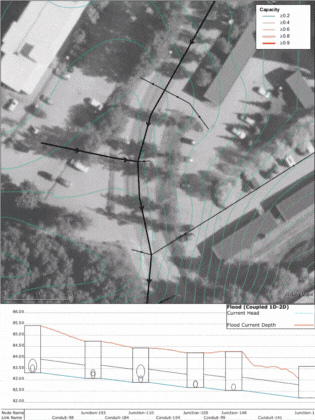
In the land of fire and ice, where nature’s extremes present unique challenges, managing water effectively is crucial. EFLA, a leading general engineering and consulting company based in Iceland, has been at the forefront of this task, specializing in wastewater and stormwater management. But like all experts, they need the right tools, and that’s where Fluidit comes in. We recently spoke with Elín Inga Knútsdóttir, an Environmental Engineer at EFLA. Through our discussion, we discovered how Fluidit’s software has become an indispensable asset in their operations.
About EFLA
EFLA is one of Iceland’s top engineering firms, involved in everything from energy to transportation. When it comes to environmental engineering, they’re especially focused on how to handle wastewater and stormwater—no small task in a country where the weather is anything but predictable.
While EFLA’s primary focus has been on Icelandic projects, their expertise extends beyond national borders. The company also consults on projects in Norway.
Collaboration with Fluidit
The collaboration between EFLA and Fluidit began when Elín was working at Veitur, one of Iceland’s largest water utility companies. Back then, she was just starting to explore hydraulic modeling software and discovered Fluidit.
“When I started using Fluidit, I had just graduated from my master’s program and had limited experience with other software, apart from some familiarity with EPA SWMM. I got really good training from the Fluidit team, which made it easy to get started.” says Elín.
EFLA has utilized Fluidit Storm, one of Fluidit’s software tools, in several significant projects. One notable project involved assessing the potential flood risk for a new building site in Reykjavík, located near a large pond. Using Fluidit’s 2D simulation capabilities, EFLA was able to accurately map flow paths and determine that the building site was indeed in a flood zone.

“The capabilities of the Fluidit software like GIS connection and 2D simulation were really useful. We don’t really have any other software that could do similar things.” highlights Elín.
Another major project involved modeling the capacity of Reykjavík’s combined wastewater and stormwater system. With Reykjavík’s ongoing urban densification and increasing inflows from district heating systems, the city needed to assess whether the existing infrastructure could handle future demand. EFLA’s use of Fluidit enabled them to simulate various scenarios, providing insights into potential capacity issues and informing necessary upgrades.

Throughout its collaboration with Fluidit, EFLA has praised the software for its continuous updates and the high level of support provided by the Fluidit team. Elín also highlighted the value of the Fluidit Wiki and other online resources, which have been instrumental in helping ELFA’s team stay up-to-date with the latest developments.
“Whenever I’ve had problems or any questions, I’ve just reached out to the Fluidit team and they were always able to answer it really quickly. And the Wiki page is always really handy.” Elín recalls.
Success outcome and results
The collaboration with Fluidit has led to significant improvements in EFLA’s project outcomes. The ability to perform detailed simulations has enhanced the accuracy and efficiency of their engineering solutions. Projects such as the flood risk assessment and capacity modeling have demonstrated the value of Fluidit’s software in addressing complex engineering challenges and supporting sustainable infrastructure development.
“Yes, I would definitely recommend Fluidit. For companies with projects related to water network systems, I think Fluidit would be really, really useful.” Elín concludes.
Conclusion
The collaboration between EFLA and Fluidit exemplifies how integrating advanced technology can drive success in managing complex environmental challenges. With insights from Elín Inga Knútsdóttir, it’s clear that Fluidit’s software is not just a tool but a partner in EFLA’s mission to deliver exceptional engineering solutions.
To learn more about how Fluidit can support your projects, please contact us.

Elín Inga Knútsdóttir
Environmental Engineer at EFLA